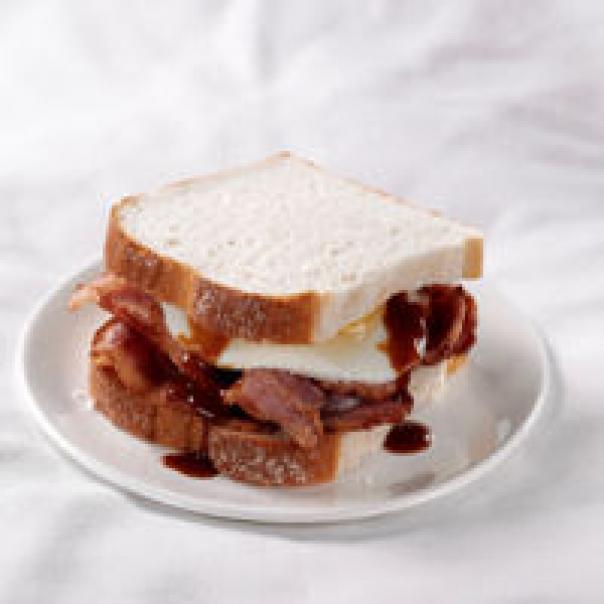
British consumers manage to munch their way through over 11.5 billion sandwiches each year – and more than half of these were made and eaten in the home;
Well over 3,250,000,000 sandwiches are purchased from retail or catering outlets each year and we paid over £6,500,000,000 for them – making the average price of a sandwich almost £2.00
What is a sandwich? The British Sandwich Association defines a sandwich as: Any form of bread with a filling, generally assembled cold - to include traditional wedge sandwiches, as well as filled rolls, baguettes, pitta, bloomers, wraps, bagels and the like, but not burgers and other products assembled and consumed hot. Hot eating sandwiches are also included.
Many consumers buying sandwiches in busy City locations will not queue for more than 2 minutes!
The record for creating the most expensive sandwich ever made is claimed by chef Tom Bridge whose Lancaster Cheese Sandwich which was sold on eBay in 2006 for £345. The creation included white Umbrian truffles at £1700 per kilo.
The world's largest 'pre-packed' sandwich is believed to be one created by Roberts Bakery in Norwich that was 2.5 metres long (down the longest edge) and encased in 1/2" thick perspex packaging. It was filled with Marmite, Princes Tuna & Hellmann's Mayonnaise and weighed the same as 1,000 loaves.
The first ‘packaged’ sandwich is believed to have been launched by Marks & Spencer in 1985 thanks to the creation of a ‘easy seal’ pack by Hans Blokmann, the then technical director of packaging supplier Danisco Otto Nielsen.
Britain’s biggest sandwich retailer by in the UK is the American franchise chain Subway which has shot ahead of the UK’s biggest retailers, including Tesco, Greggs and Marks & Spencer’s, in the sandwich stakes in the value of the sandwiches they sell. However, Tesco outsells them in the numbers of sandwiches sold by several million.
The first sandwich – in name at least – was created by the 4th Earl of Sandwich in 1762 when he called for some ‘cuts of beef ‘to be placed between toasted slices of bread so that he could continue gambling while he ate. At least it was the first toasted sandwich! It is believed that sandwich making dates from well before this time but was largely a food eaten by peasants. The Earl’s request elevated the humble sandwich from the fields to the tables of the aristocracy.
Chicken remains the No. 1 most popular filling in commercially made sandwiches accounting for around 30% of all commercially made sandwiches – we eat some 55,000 tonnes of chicken in sandwiches each year. However, chicken is gradually losing its dominance, with both egg and ham sandwiches gaining in popularity in the last year. The following are the estimated volumes of key ingredients used by the commercial sandwich market each year:
Ham and cheese are the favourite sandwich filling in home-made sandwiches.
Around 58% of all commercially bought sandwiches are made with traditional square sandwich bread.
Wraps account for about 5% of all sandwich sales in major retailers. The big new thing with wraps has been the hot wrap, with a number of new products being launched recently. They really do taste great hot!
Panini sandwiches are also gaining in popularity – accounting for around 2% of sandwich sales.
More sandwiches are consumed in hot weather than when it is wet or cold.
Some 3.2 billion sandwiches are carried out of the home each year in lunch boxes.
The UK sandwich industry employs more people than the UK agricultural industry. It is estimated over 330,000 people are now employed in the commercial sandwich sector.
'Sandwich' is also a town in Kent, although the name has no direct connection with a sandwich. Its origin comes from the Saxon meaning for 'Sandy Place' or 'Place on the Sand'. The town is likely to have been formed in Roman times although the first recorded mention is in 640AD. The town is also the birthplace of Viagra.
The UK commercial sandwich industry (sandwich manufacturers and sandwich bars) make enough sandwiches each year to stretch around the world 8 times (end-to-end) with a bit over!